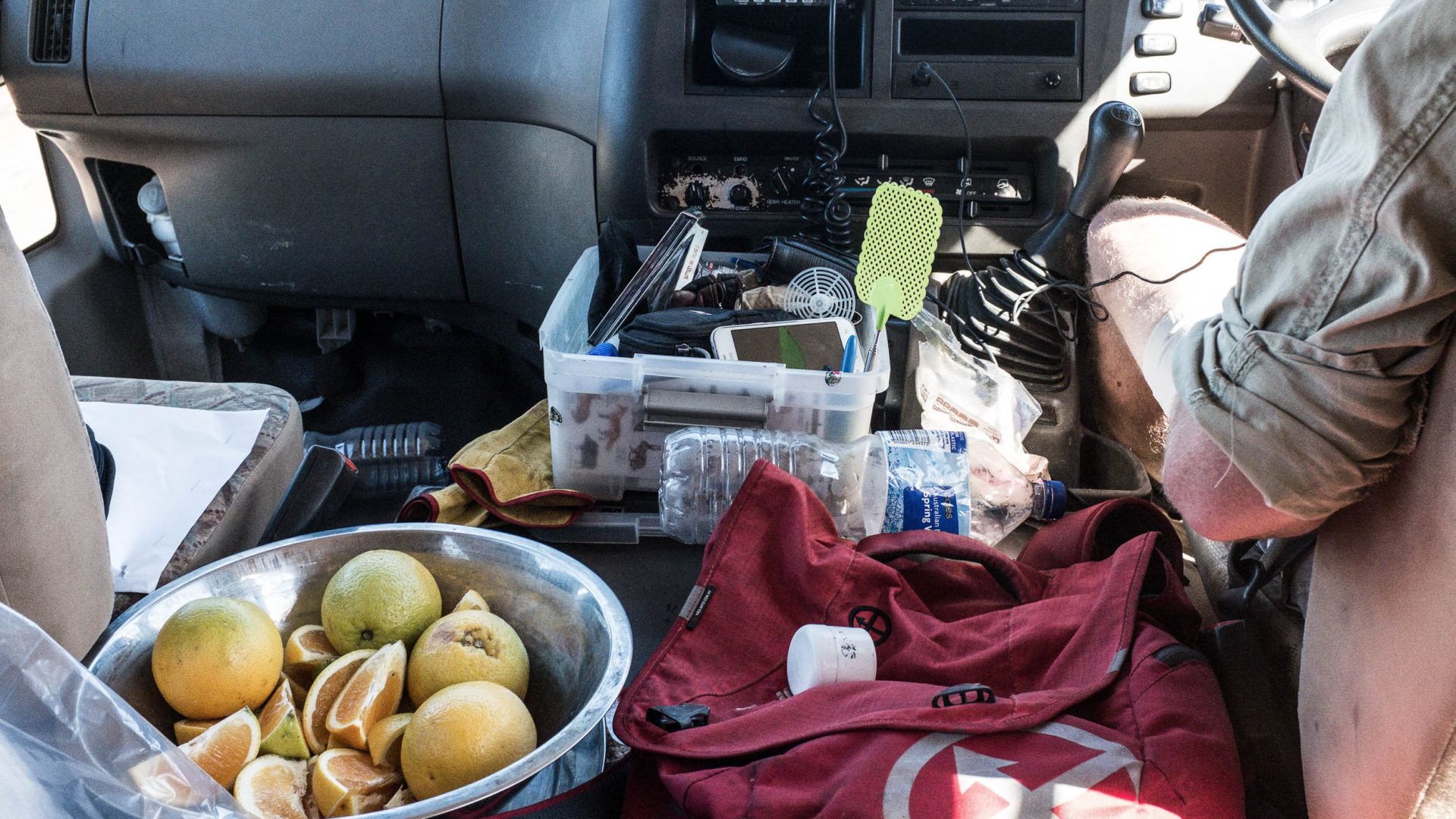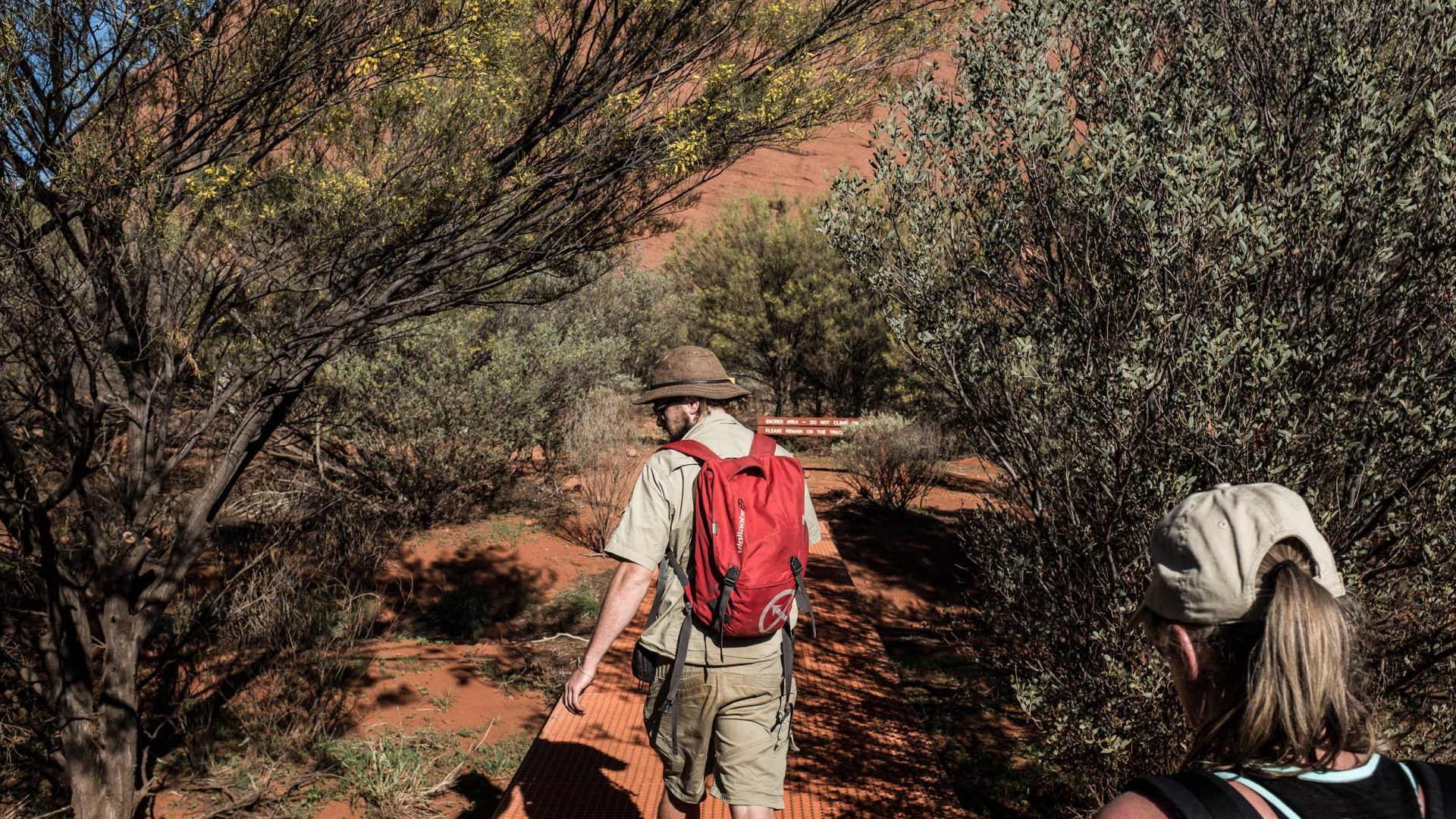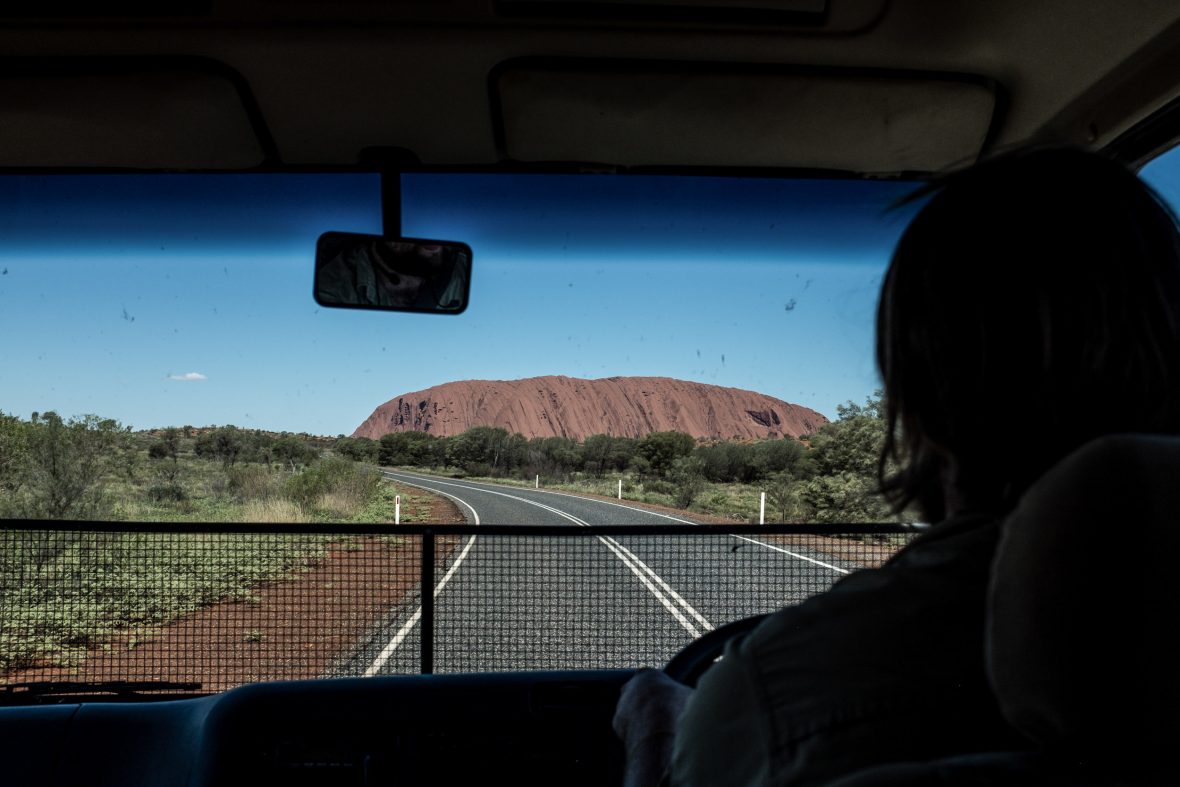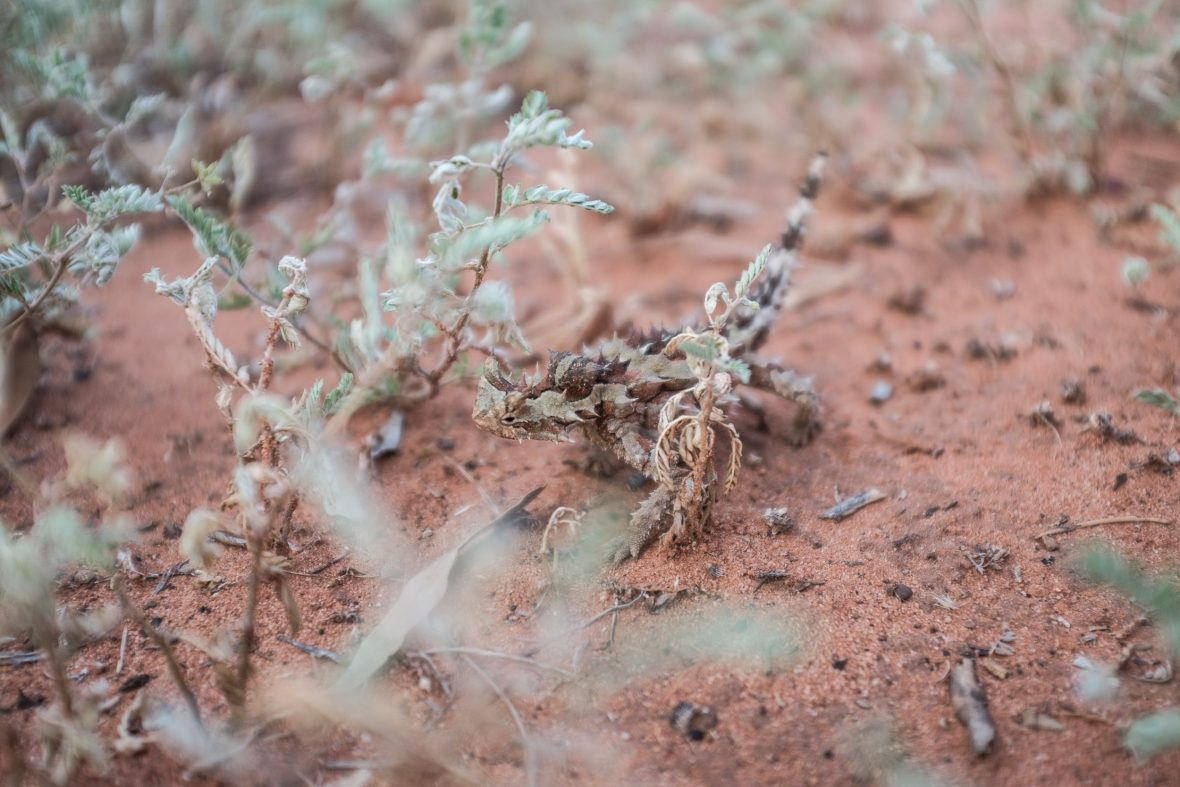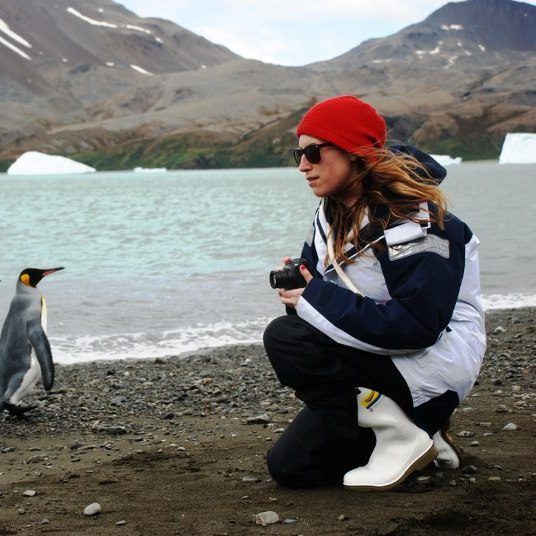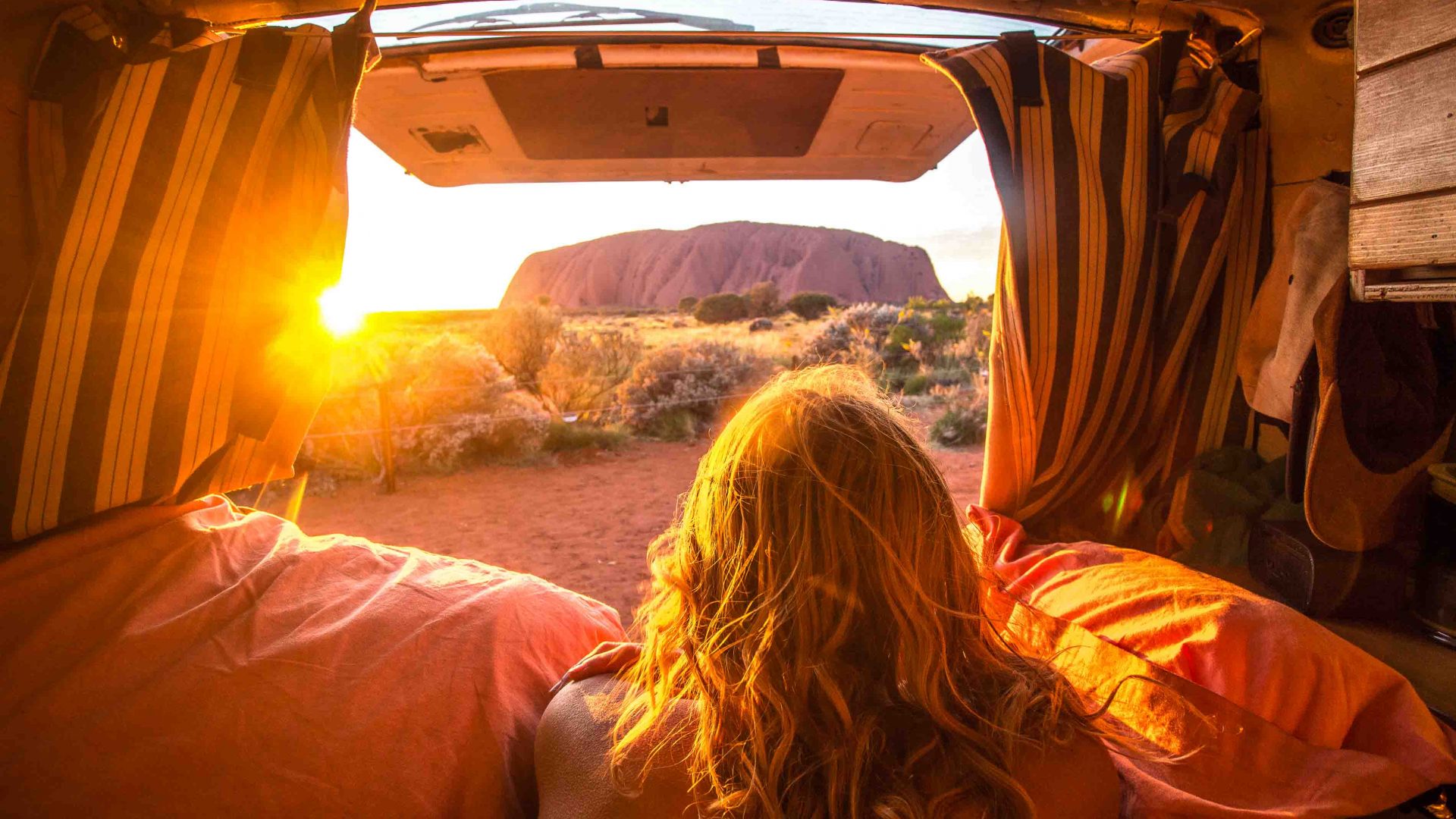
Uluru’s long-awaited climbing ban came into effect in October 2019, but there’s still so much of Australia’s sacred sandstone heart to explore at ground level, says Oliver Pelling.
Our bus is hurtling along the Northern Territory’s Red Centre Way. It’s a long, hot road and it’s shepherding us some 321 kilometers from Kings Canyon—where we camped the night and hiked the morning—back into Uluru Kata Tjuta National Park, where we’ll begin our education on Uluru proper.
Up front sits Justin Burrill, our charismatic guide. One hand on the wheel, the other clasping a fly swatter, he slaps at flies while facilitating the hurtling, resembling a character from a Monty Python sketch. Aretha Franklin’s Respect is playing on the radio; a big red smudge paints itself across the bus windows. It is, predictably, hot as hell.
“None of my mates back in Melbourne would know diddly-squat about Aboriginals anywhere in Australia,” Justin yells back at me between swipes. “People need to get out there and learn more about it. We owe these people at least that, I think.”



